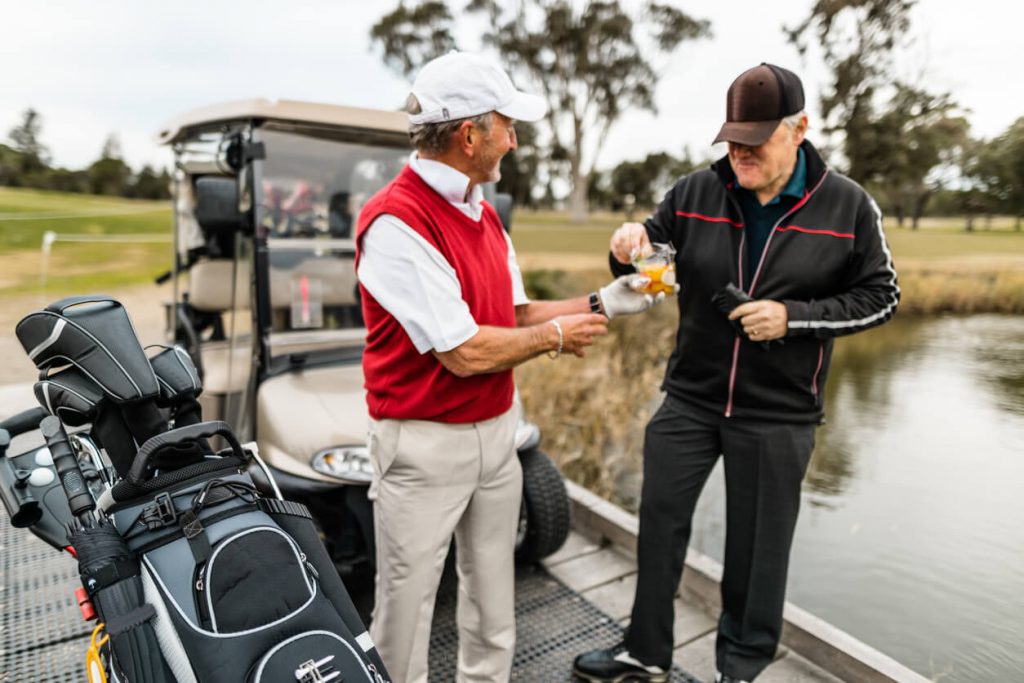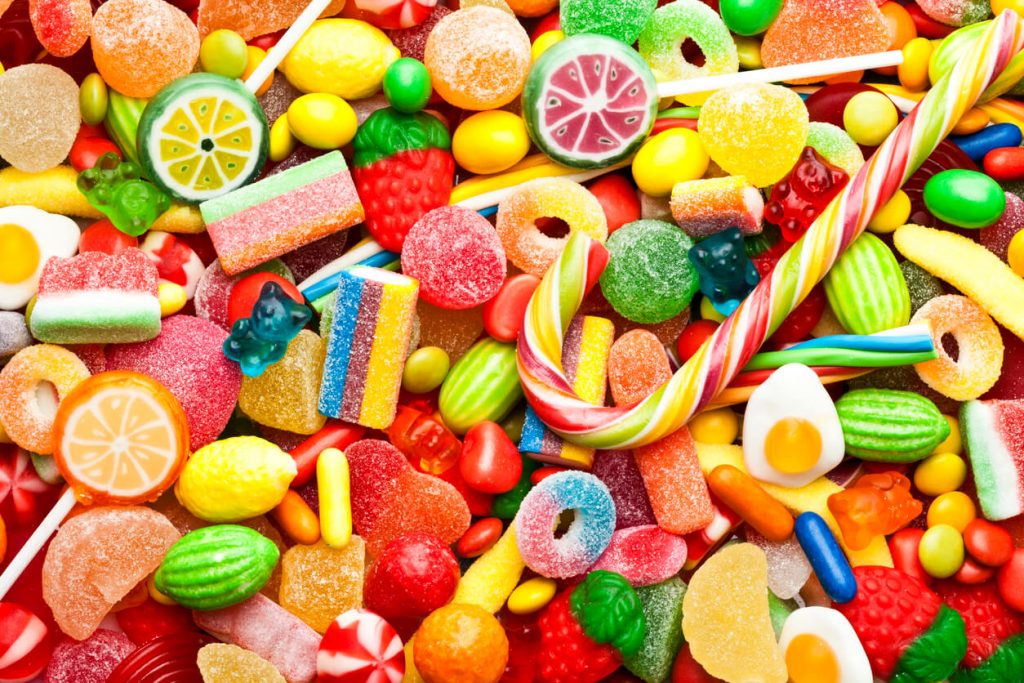The golf diet: what do golfers eat?

“I have had the same pre-round routine for nearly 30 years. It’s not complicated, but I think that’s important,” says two-time European Tour winner Markus Brier.
“That goes for what I eat just as much as how I warm up. I arrive at the course an hour and ten minutes before my tee time to start to warm up—but my routine has already started before then—with my nutrition.”
He’s not alone.
The days of a solitary banana being the extent of a ‘golf diet’ are long gone—and this development is not just confined to elite golfers either. The golf diet has certainly evolved, with many more amateurs taking more interest in what they fuel up with before and during a round.
A two-week-old banana that’s turned entirely black at the bottom of a bag might still be the extent of many club golfers’ nutrition, but there is an increasing awareness across the game that what you eat can help your golf game.
The golf diet
So, what should you eat before and during the round to
give yourself the best chance of a low score?
“Most rounds start before lunch, so a good breakfast is
key to any golf diet,” says Brier.
“I’ll usually go for cereal with yoghurt and fruit—substantial but won’t leave me feeling sluggish. If I have a later tee time, I’ll also have scrambled or poached eggs on toast.”
The Austrian’s start to the day provides plenty of fibre and sustainable energy—key for breakfast as far as golfers are concerned. A slow release of energy through the cereal and toast—especially wholemeal toast—is what you want.
But what should you eat when you’re actually on the golf course?
What do golfers eat during a round?

“We’re out there for probably five hours on average, and
that’s too long to go without food,” says Brier.
“If I have an early tee time, I’ll probably just have some snacks with me, but I need a sandwich if it’s later. I avoid sugary snacks such as chocolate bars and so on—I avoid the high and low.”
Instead of sugar-filled snacks, the best on-course
nibbles to keep you going are things like apples, bananas (of course), or cereal
bars, which are often a good source of protein.
Nuts are another good choice; making your own ‘trail mix’ is a great idea. If that sounds too much like a hike in the mountains with Bear Grylls, fear not—it’s simply a case of buying some almonds, unsalted nuts, and fruit like raisins, dried pineapple, banana and apricot pieces and mixing them all together.
Pack a sandwich if you need something more substantial. We’ve all seen Tiger Woods munching a sandwich walking down the fairway, and you can be sure his are peanut butter or lean meat and salad. Golf is certainly no time for an ‘all-day breakfast’ feast between two big slabs of white bread.
The amateur golf diet

Amateur golfers will start their round in the afternoon
more often than Tour pros do.
“Don’t go for a heavy meal before you tee off. If you need a decent meal, finish it at least 90 minutes before your tee time,” says Brier.
“And avoid burgers, chips, and other heavy foods like
these as part of your golf diet—they’ll make you feel full, yes, but they’ll also
make you feel tired.”
Your body has to work harder to digest processed foods,
which can make you feel lethargic—and no one swings well when they’re
lethargic.
Instead, opt for a chicken salad, a small pasta dish with some vegetables or a chicken or ham wrap (we’ll let you have a small packet of crisps too).
Beans on wholemeal toast is probably the easiest and
cheapest way to load up on slow-releasing energy. A poached egg on top, too, is
a good, easy source of protein.
If you’re eating closer to your tee time, you need to be more careful with carbs like pasta and bread, as they can make you feel sluggish. While chicken and beans might sound like a footballer’s pre-match meal from the 1980s, it’s not a bad option at all if it’s 12:10 and you tee off at 13:22.
Staying hydrated is important, too, naturally, and with
many clubs having water fountains dotted about the course, it’s not difficult
either. There’s no excuse not to stay hydrated—and the old saying is certainly
not a myth—that if you feel thirsty, you’re already dehydrated.
Take on water every few holes, even when it’s not especially warm. A protein shake can also keep you feeling full as well as hydrated, and release some energy, too.
Caffeine is also a useful stimulant in the golf diet, so a nice cup of coffee with your breakfast is not a bad idea either.
Sweet treats for golfers

Is there ever an occasion when sweet tooths can
justifiably get stuck into some chocolate in a golfing context?
“I wouldn’t really recommend it, but I know some players on the Legends Tour will have a bag of sweets and might have one now and again,” says Brier.
Colin Montgomerie made jelly babies popular when he started popping them at the Senior Open at Gleneagles in 2022, and three or four per round can actually give you a nice boost in energy without the crash.
Jaffa Cakes, too, are another light, acceptable option—but when you start talking about larger chocolate bars, like a Snickers, for example, you’re running the risk of having a sugar crash three holes later.
Once you’ve sorted out your golf diet and got to grips with nutrition, you should notice a positive difference in your performance out there on the green.
But before you head out for a round, you may want to consider protecting yourself with specialist golf insurance.
With Golf Care, policies include Equipment Cover up to £7,500 and Public Liability up to £10m, so you can play with peace of mind.
Click on the banner below to learn more and get an online quote.








